Flying Start to Literacy: PHONICS™
An exciting resource for explicit and systematic phonics instruction for young students














An exciting resource for explicit and systematic phonics instruction for young students













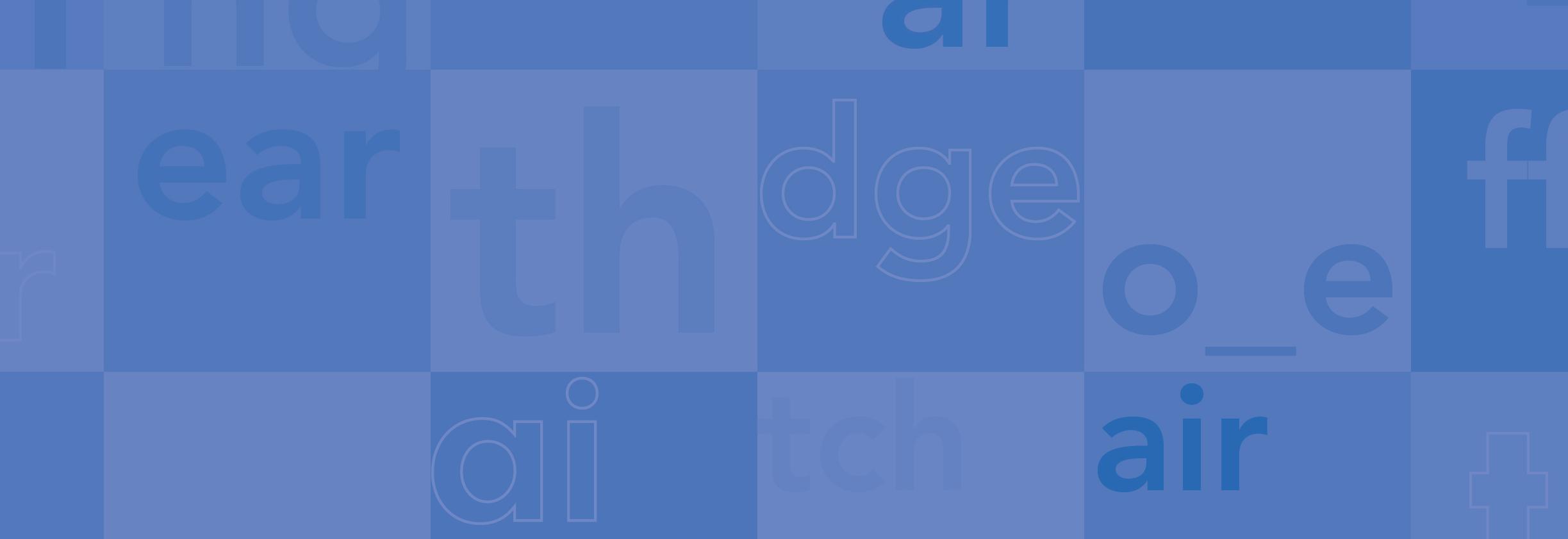
Flying Start to Literacy: PHONICS ™ will engage your students and support their literacy development with instructional practices that are based on research and are both meaningful and supportive.
All the key components of a rich Foundational Skills resource are covered. Students are encouraged to explore oral language with rhymes and chants, to build vocabulary, and to engage in phonological awareness activities.
The program follows a scope and sequence of skills and knowledge from common sounds of consonants and vowels to less common letter–sound patterns. Each Teaching Unit supports the explicit and systematic teaching of phonological awareness, phonics, morphology, and highutility words. Writing instruction is included in each unit, providing opportunities for teaching letter–sound knowledge.
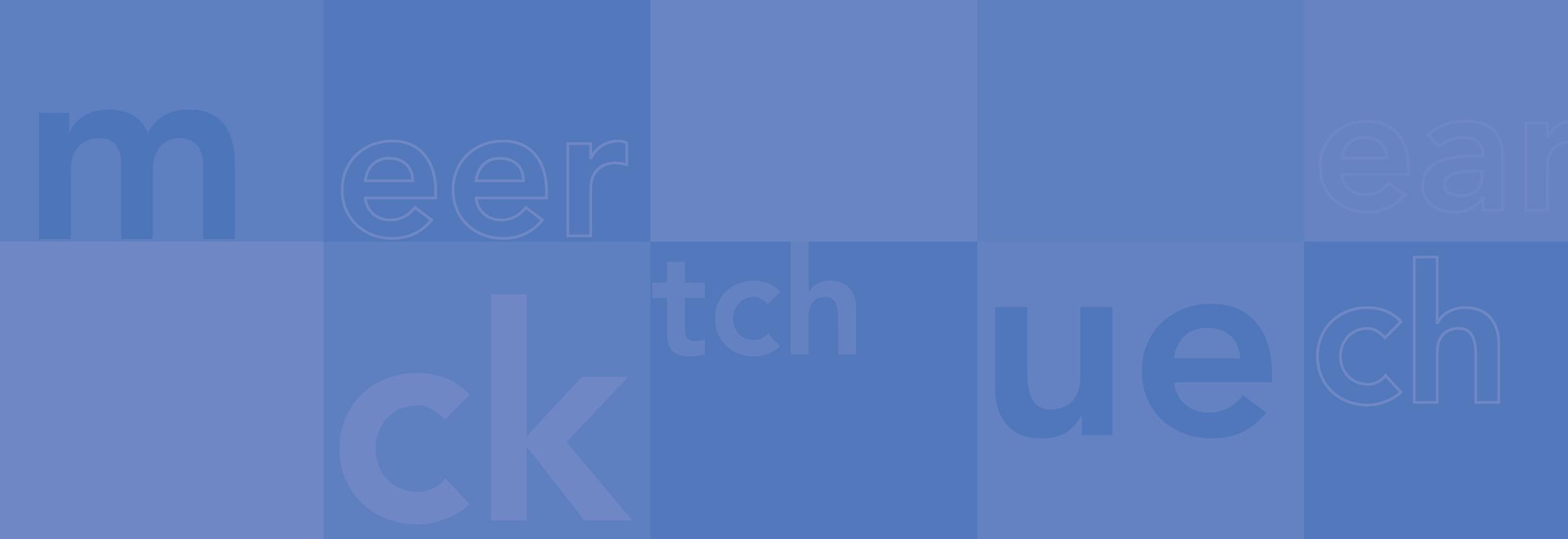
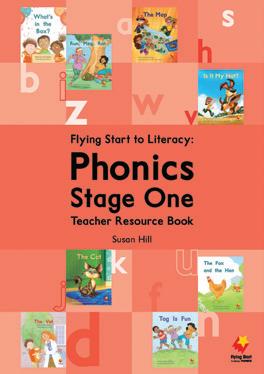



Assessment allows for the placement of students within the program, organizing them for learning, and monitoring their progress.
Flying Start to Literacy: PHONICS™ follows an explicit and systematic phonic progression that flows seamlessly into the Flying Start to Literacy™ small group reading resource.



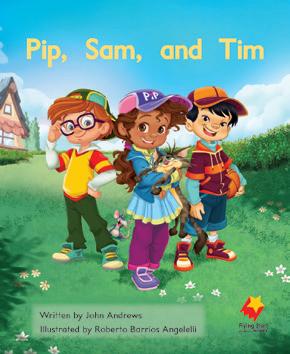
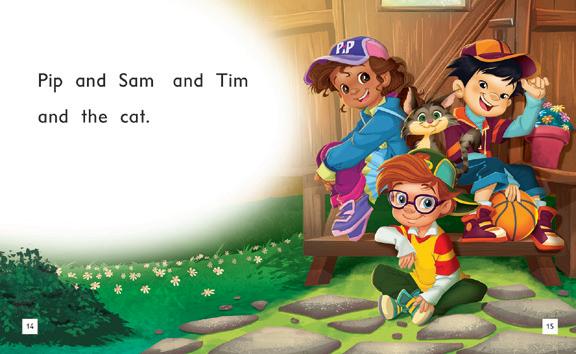
What and when are the students reading?
Exciting, engaging decodable books provide a foundation for beginning readers as they progress to independent reading in later primary grades. The books match the teaching sequence and support the students as they put what has been learned into practice. The seventy decodable books support the letter-sound correspondences and high-utility words taught throughout the program and allow students to use their decoding and word recognition skills to develop fluency and comprehension. The student texts are 100% decodable when the sequence of instruction has been followed.


• The Scope and Sequence moves from simple letter-sound correspondences to more complex.
• The sequence provides time for foundation skills to be established.
• Clearly defined goals for each Teaching Unit (and each activity within the unit) are a feature of the program.
• Recently taught letters and sounds are carefully reviewed.
• There are ample practice and application opportunities for student accuracy and confidence.

Oral language involves listening comprehension and underpins reading and writing.

• Vocabulary development of new words occurs in each lesson.
• Vocabulary is linked to comprehension.
• Vocabulary used in chants and rhymes is defined.

Instruction in Foundational Skills: Phonological Awareness
Phonological awareness is linked to the focus of each Teaching Unit—as in “Say rat.” “Now say rat without the /r/.” “Yes, at.”

• Teaching goals for letter sounds are explicitly stated.
• Words with the target letter sound occur in word-building activities.
• A writing activity is part of each Teaching Unit.
• Practice sentences that feature the focus letter-sound provide students with opportunities to decode and practice reading words with the letters and sounds they have learned.
• Multiple activities are used for the review and practice of the letter sounds:
• Dictation of words occurs in units and reviews.
• Sound–letter charts are used for multisensory learning of letter sounds.
• Clear images for each letter sound can be used in activities in daily revision.

• Word building is developed.
• Morphological awareness builds word awareness.
• Activities for building words are provided.

• Useful words for reading and writing are taught and analyzed using sound–letter charts (orthographic mapping).
• The addition of new words and the revisiting of those already taught occurs in teaching units and decodable texts.



Dr. Susan Hill is an Associate Professor of Early Childhood Education. An acclaimed researcher in the field of early language and literacy, she is the author of a number of books for teachers including Developing Early Literacy: Assessment and Teaching (Third Edition), research articles and chapters for the Handbook of Research on the Education of Young Children, the Handbook of Research Methods in Early Childhood Education, and Contemporary Perspectives on Research in Assessment and Evaluation in Early Childhood Education.
• Systematic reviews of content newly taught within each Teaching Unit.
• Further rigorous reviews are provided at the end of each Module.
• Comprehensive one-on-one Assessments are provided for each Stage.
• Decodable books are provided for each Module to check for decoding, fluency, and comprehension skills.

• Decodable books provide practice for the phonics skills taught in each lesson.
• The books have engaging content and illustrations.
• From Stage Two onward, the decodable texts are paired informational and fiction books.
• Each book has easy-to-use Teaching Notes at the back of the text.
• Comprehension questions are literal, interpretive, and evaluative.
• The phonic focus is easy to identify in the decodable books, and is repeated within the book.
• The decodable books align with the scope and sequence.

• Fluency is encouraged in multiple readings of decodable books.
• Fluency and accuracy of letter sounds and letter names is encouraged.
• Practice and accurate reading and writing of the letter-sounds is essential.

• Listening comprehension is emphasized.
• Meaning-making occurs in fiction and informational texts.
• Content knowledge is developed in informational texts.
• Fluency is built to support comprehension.

Flying Start to Literacy: PHONICS™ is anchored by the Teacher Resource Books—one for each stage—that offer comprehensive, explicit, and systematic instruction divided into three modules for Stage One, and two modules each for Stages Two and Three. Each Module concludes with a review of the letter-sound correspondences taught in that Unit. Handsomely designed, with full color throughout, Teacher Resource Books are designed to be easy to follow and clear in their organization.


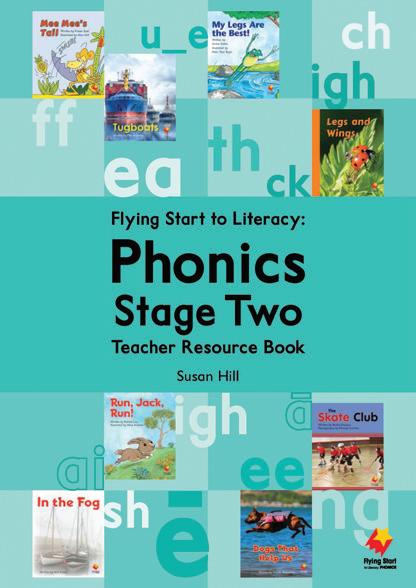


Seventy titles in all—these Decodable Books have been carefully crafted to reinforce the skills presented in each module. Compelling texts with recurring groups of characters are offered for Modules One, Two, and Three. Paired informational and narrative texts are introduced in Stage Two Module Four. Notes included in every book offer invaluable support for using the texts as part of the overall instructional process.


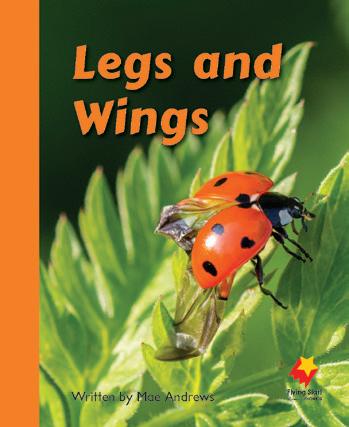

unit per Module. Stage Three

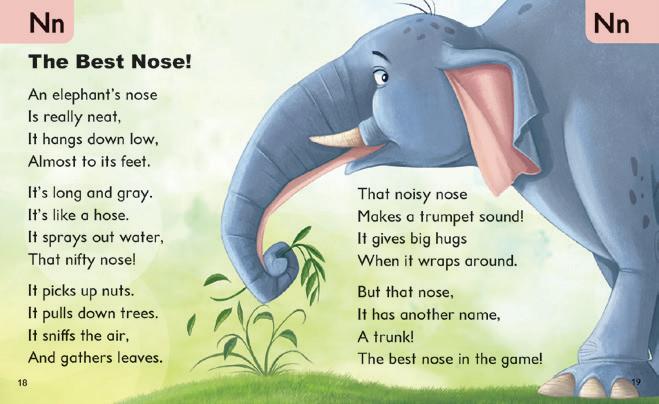
The Big Book of Rhymes is a lively, oversized collection of shareable poems, lushly illustrated in full color. It provides a rhyme for each letter of the alphabet as it is introduced. Rhymes can be used in oral language activities, phonological awareness, building vocabulary, and identifying high-utility words.
Alphabet Cards
Double-sided Alphabet Cards feature a picture on one side and the picture with its letter correspondence on the reverse.
Colorful, laminated, and sturdy, these cards will withstand countless hours of student interactions.



Teaching Notes in Every Book Are Available for Downloading!

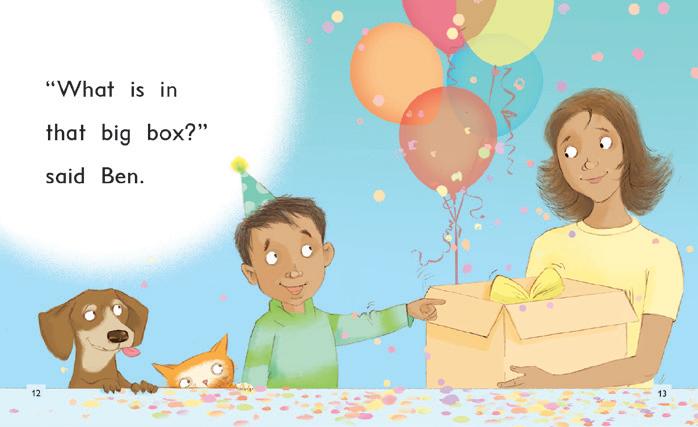


When I learned that Okapi’s Decodable Readers were going to be available, I couldn’t wait to view them. Students respond to the knowledge building that these books supply. The quality of the literature and informational texts disguise the fact that these are decodable books. —D. Myers, Spokane Public Schools
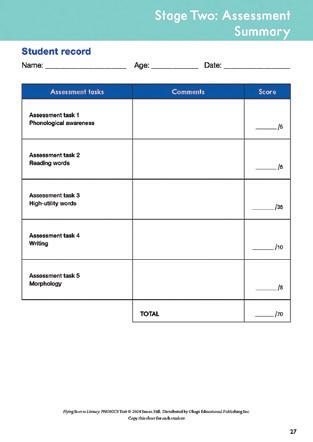
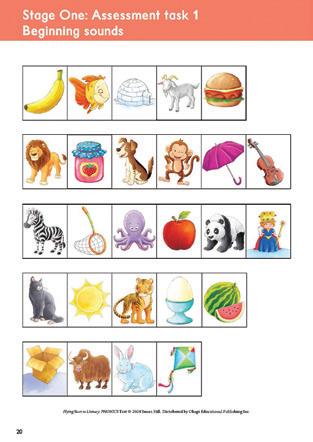



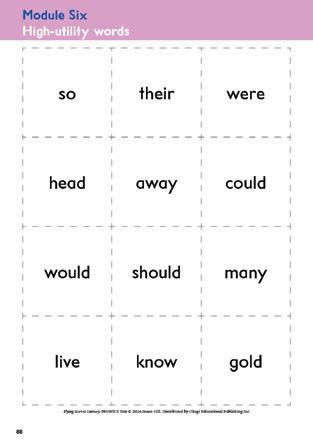
Essential instructional components are available for free downloading from the Okapi Digital Literacy™ platform. Helpfully organized by Stage and Module, each unit’s downloads provide everything you will need to place in students’ hands for reading, writing, and assessment.

Flying Start to Literacy: PHONICS™ teaches phonics in a systematic and explicit process along with five other key components required for literacy development: oral language, phonological awareness, fluency, vocabulary, and comprehension.

Teaching Units follow the same structure throughout the program. Content is appropriate for the level of the students at each stage in the program.
Oral Language Development
Extend oral language awareness by using letter–sound chants and rhymes focusing on the rhythm, rhyming words, clapping and clicking the syllables, hearing sounds in words, and by using varied oralreading expression, such as loud and soft/fast and slow.
Phonological Awareness
Develop phonological awareness through auditory activities that focus on the sound of the letter introduced in the unit.
Vocabulary
Find a word or words in the rhyme to explicitly teach to your students. Define the word using studentfriendly language.
Alphabet Review
Progressively review letter-sound correspondences to practice retrieving information.

Phonics
Encourage students to connect a sound to a letter and to write the letter in uppercase and lowercase.
High-Utility Words
High-utility words are useful, and many of these need to be taught explicitly. Sound–letter charts are used for explicit instruction of high-utility words.
Consolidate Learning Activities for students (individually, in pairs, or small groups) to practice new knowledge and skills that will help them to develop accuracy and automaticity when reading and writing.

Each lesson in the Stage One Units provides instruction on:
• Oral language development and listening comprehension
• Building a rich vocabulary
• Phonological awareness: identifying and manipulating syllables and phonemes with spoken words
• Phonics: letter-sound relationships and word building
• Writing: forming lowercase and uppercase letters and words
• High-utility words
• Consolidated learning activities where students can practice new knowledge and skills.
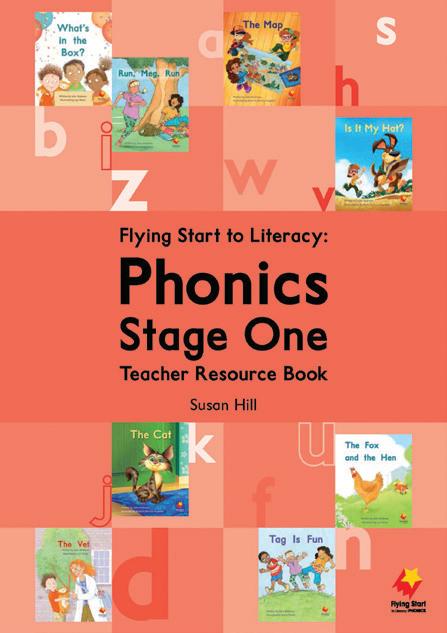





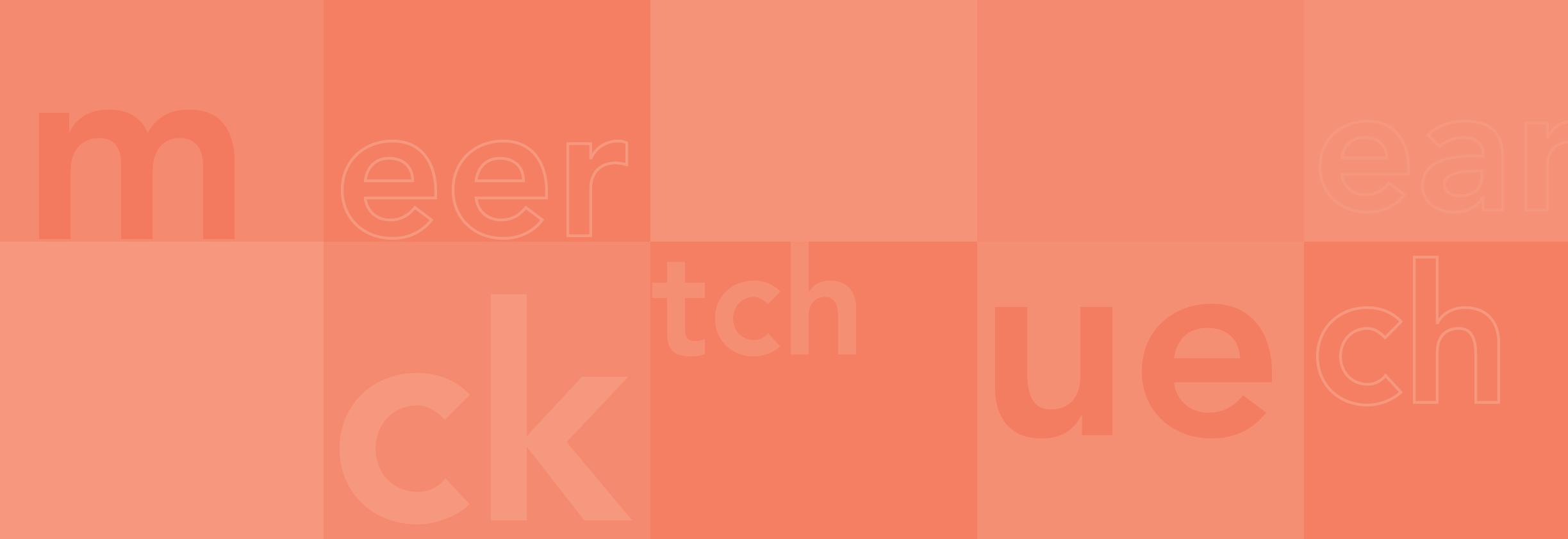
In Stage One—with the focus on introducing the alphabet— the decodable books are read at the end of each module.
• Module One’s nine letters and nine high-utility words are featured in the first set of books.
• Module Two’s eighteen letters and nineteen high-utility words are featured in the second set of books.
• The full alphabet with accompanying high-utility words are covered in Module Three’s decodable books.




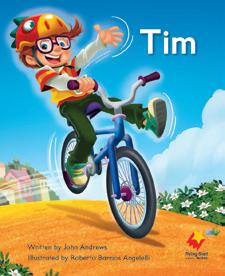
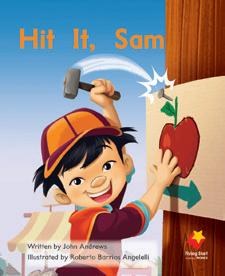


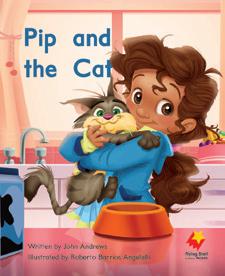

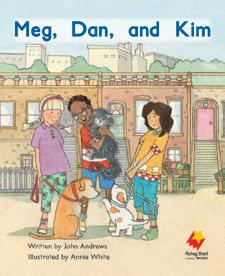


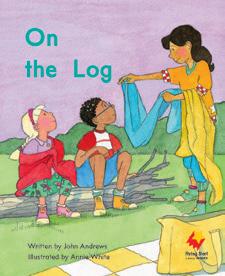



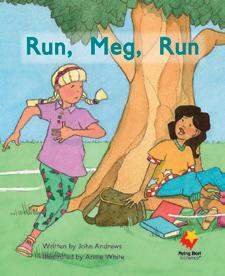
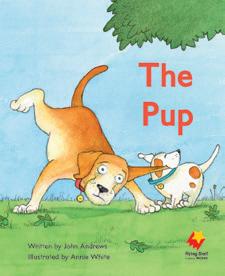
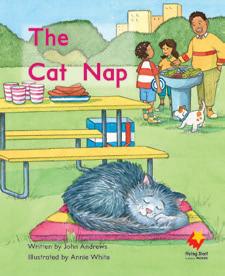



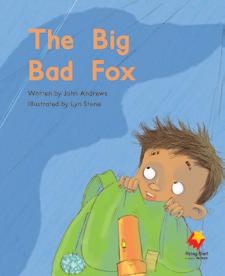





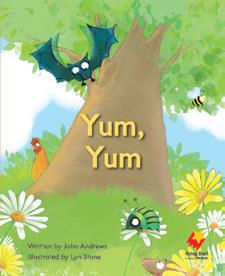
In Stage Two, the basic structure of the lessons continues. Attention turns to:
• Double letters
• Adjacent consonants


• Long vowels
• Reading longer multisyllabic and compound words
• Morphology
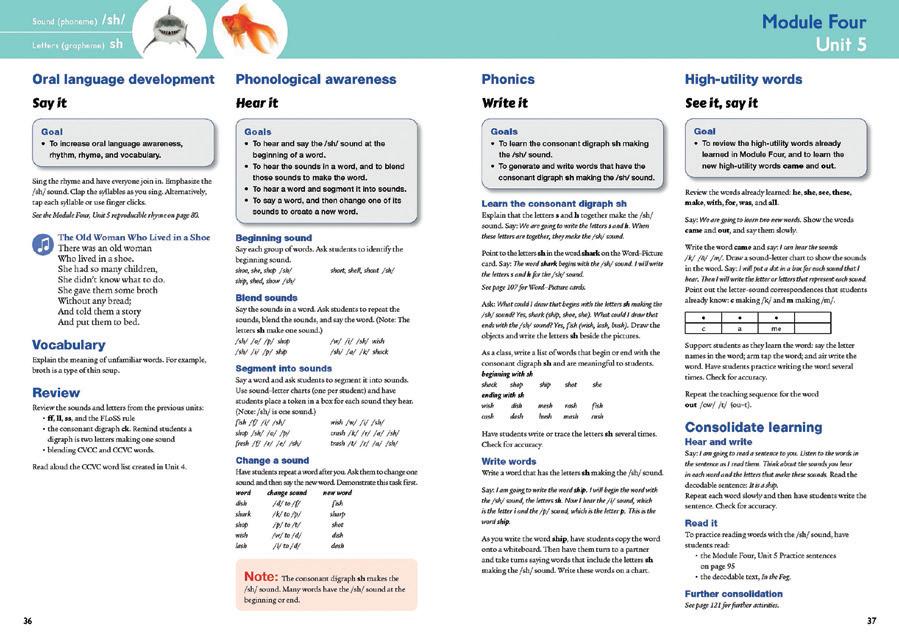


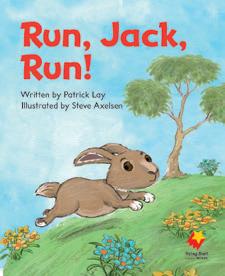




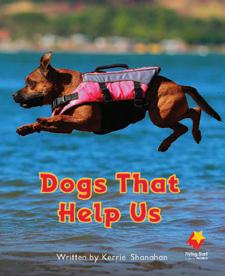

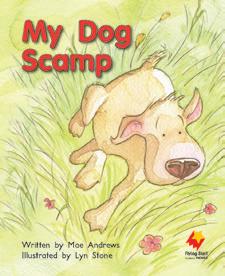


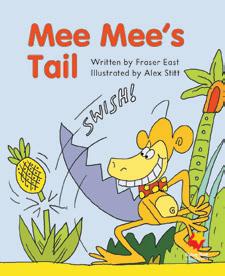
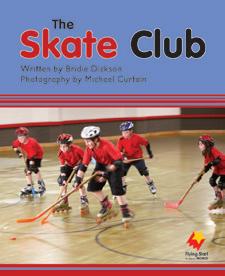
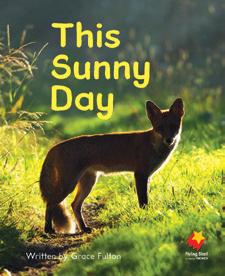


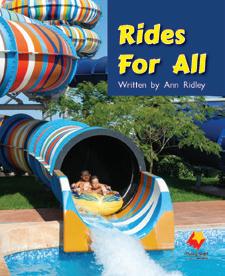

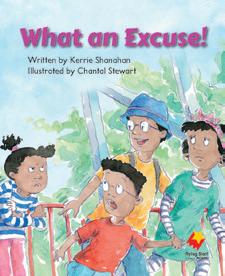

In Stage Two, the Units Four and Five decodable books can be read at the end of each lesson. Each book contains words with the letter-sound correspondence the students have just learned.
Module Four
Phonic Focus /f/ sound made with ff as in cliff /l/ sound made with ll as in doll /s/ sound made with ss as in dress /k/ sound made with ck as in duck
Blending four sounds: CVCC words as in tent
Blending four sounds: CCVC words as in flag /sh/ sound made with sh as in shark /ch/ sound made with ch as in cherry /ng/ sound made with ng as in ring /th/ sound made with th as in thumb
Blending five sounds: CCVCC words as in stamp
All phonics focuses from Module Four
High-Utility Words he / she see these / make / with for / was / all came / out then / when have / two too / water some / find He / she / see / these / make / with / for / was / all / came / out / then / when / have / two / too / water / some / find
Application Informational Text: Hop and Run
Fiction Text: Run, Jack, Run!
Informational Text: How Ants Make Nests
Fiction Text: A Nest for Stan
Informational Text: In the Fog Fiction Text: Chad Is Lost Informational Text: Legs and Wings
Words with Phonic Focus Jeff, Tess, Will, puff, off Jack, Mack, quick, Quick, back, luck nests, bits, help, sand, silk Stan, glum, plan, stop, Spit, slip, Snip, glad ships, fish, Ships, crash, ship, Flash, flash
Module Five
Phonic Focus Long /ā/ vowel sound made with ai as in snail and ay as in play
Fiction Text: My Legs Are the Best!
Informational Text: Dogs That Help Us
Fiction Text: My Dog Scamp
Champ, lunch, Chad long, wings, hang, cling, fangs with, them, thin, they sniff, Trent, swims Josh, Scamp, lost, Sniff, sniff, hill, still, stuck, long, branch, Thanks, Ruff, ruff
Long /ē/ vowel sound made with ee as in feet and ea as in leaf
Long /ē/ vowel sound made with y as in happy Long /ī/ vowel sound made with igh as in light and y as in fly
Long /ō/ vowel sound made with oa as in boat and ow as in row
Long /ā/ vowel sound made with a_e as in cake
Long /ī/ vowel sound made with i_e as in bike
Long /ō/ vowel sound made with o_e as in bone
Long /y-ōō / sound made with u_e as in cube
All phonics focuses from Module Five
Application Informational text: Tails Fiction Text: Mee Mee’s
Words with Phonic Focus tails, tail, stay, wait, ray, way, stay, waits Mee Mee, tree, sneak, glee, reeds, tweak, need, scream sunny, quickly, sandy, softly, sleepy, empty, shady, very right, cry, light, night, sky, Try, sigh, fly Tugboats, boats, slows, tugboats, slowly, float, tow, own take, Jake, brave, Kate, waves, safe, make, Jane, made inline, time, fine, wipe, like, shine, side, Mine, mine, slide, glide, line, wide, smile Hope, rode, rope, chose, slope, broke, home, spoke, suppose, close tune, cute, use, tube, excuse ride, excuse, steep, my, slowly, tune, playing, cute, slow, boat, sail, high, make, time, try

Stage Three focuses on less common letter sounds. Students further build their growing bank of high-utility words. Mastering this bank of high-utility words allows students to practice their new phonetic knowledge in the context of a sentence and in a longer, connected text. In Stage Three, the Units Six and Seven decodable books can be read at the end of each lesson.
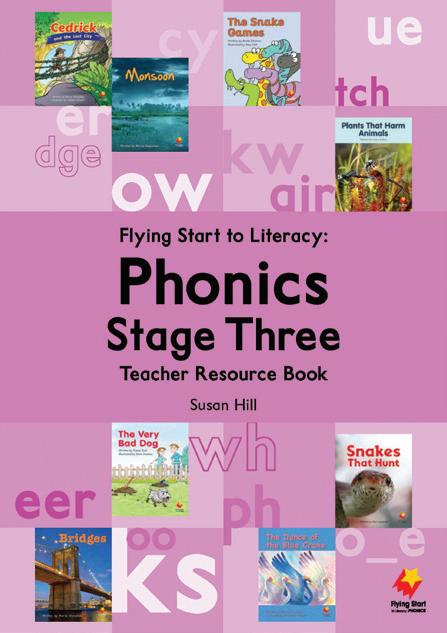

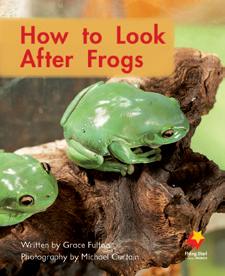







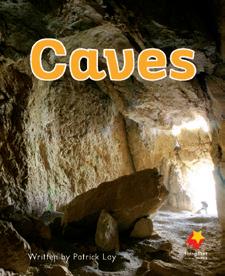



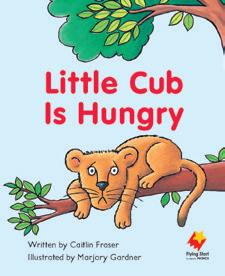



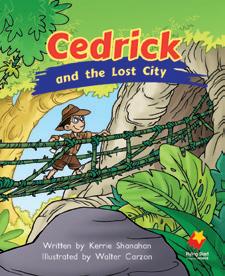

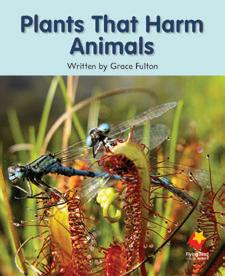

Module Six
Phonic Focus /ow/ sound made with ow as in cow and ou as in cloud

Short /oo/ sound made with oo as in book
r-controlled /ar/ vowel sound made with ar as in car
r-controlled /or/ vowel sound made with or as in corn, ore as in snore, and our as in four
r-controlled /er/ vowel sound made with er as in fern, ur as in burn, and ir as in bird r-controlled /air/ vowel sound made with air as in chair r-controlled /ear/ vowel sound made with ear as in ear and eer as in deer /oy/ diphthong made with oy as in boy and oi as in coin
Long /ōō/ sound made with ew as in stew, ue as in blue, and oo as in moon
All phonics focuses from Module Six
High-Utility Words so / their were / head away could / would / should many / live know / gold food who people / again so / their / were / head / away / could / would / should / many / live / know / gowld / food / who / people / again
Application Informational Text: How to Look After Frogs
Words with Phonic Focus out, how, house, now, outside, sounds, mouths, brown, count, around
Module Seven
A Very Smart Bird
Frog
look, good, took, shook, looking, cool, looks farm, barn, far, part, parts, start, bars, Star, hard Cory, Storm, for, more, horn, north, boring, sort, your survive, first, dirt, fur, thirsty, curls, her, spiders, birds, spider hairy, hair, fair, stairs, air, pair fear, near, hear, ears, hearing Troy, noise, joy, pointed, pointing, toy, boy monsoon, soon, few, food, new, too, blue smart, bird, herd, soon, food, air, clear, ground, look, storm, far, enjoyed, now
Phonic Focus /f/ sound made with ph as in phone /w/ sound made with wh as in whale /j/ sound made with g as in gemstone, giraffe, gym; ge as in sponge; dge as in bridge /s/ sound made with c followed by e as in cent, c followed by as in circus, c followed by y as in cygnet, and ce as in prince /ch/ sound made with tch as in patch /or/ sound made with aw as in paw and au as in faucet /er/ sound made with or as in worm /e/ sounds made with ea as in bread /u/ sound made with o_e
Words with Phonic Focus dolphin, dolphins, elephant, elephants when, why, while, where, what bridge, bridges, huge, edge, gently, gorge, hedge Cedrick, places, city, chance, twice, raced, pace, face, place, nice, bounced, prince itch, scratch, catch, scratches, fetch, scratched, pitcher Dawn, Audrey, Paul, lawn, Miss Strawn, cause, crawled, paws
worst, work, worth, word, world, schoolwork
heads, spread, head, instead, breath, meant
love, above, sometimes, gloves, none, oven, done Ephram, while, huge, prince, ready, stretched, yawned, worked, workers, loved
42381 Rio Nedo Road Temecula CA 92590
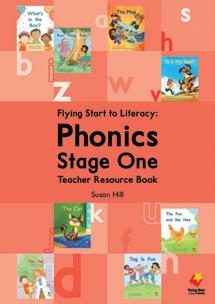


•